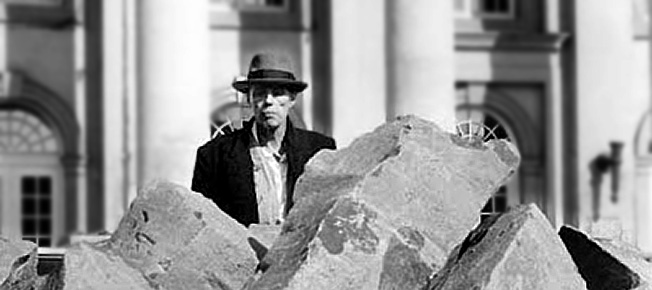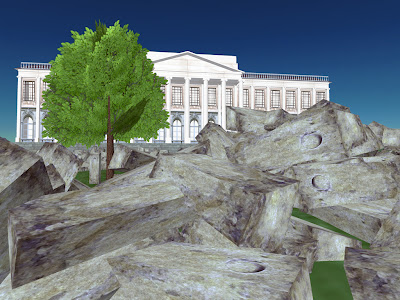Watching Abramović’s “The Artist is Present” made me want to revisit the concept of presence in art, especially in virtual worlds. Presence and immersion have been “hot” topics in virtual reality ever since the inception of the technology – it is, after all, what differentiates “virtual reality” from a two-dimensional desktop experience. There are, however, many definitions of presence out there, and depending on the definition used, some have argued that presence cannot be achieved in desktop virtual environments such as SL. I for one, have defined presence as the “Subjective description of participants’ psychological and behavioral states in the environment, extending to the degree to which participants perceive the environment as a place visited as opposed to having viewed computer generated graphics.” With that said, I do believe that presence can not only be achieved in SL, but is also needed to forge an emotional connection between user, avatar, and environment.
Maybe a brief background of my experience with SL will shed some light on the point I am trying to make. I was first exposed to SL in 2008 as part of a Master’s level Museum Informatics course I took at Florida State University (the professor of the course, Dr. Paul Marty, is actually on my dissertation committee today). While I had had previous experience with video games, I did not immediately connect or even see the point of SL. I initially walked around SL as a “newbie” avatar, mostly avoiding other avatars and not knowing what to do, where to go, how to be, or even how to get from point A to point B. I somehow managed to get out of orientation island in one piece and landed on top of a deserted skyscraper in what looked like a post-apocalyptic Gotham city populated by aliens and strange, vicious animals. After my computer crashed for the third time, I abandoned the idea of exploring this virtual world which, at the time, was all the rage, but frankly, terrified me.
After reading several articles on the use of SL in formal and informal education, I decided to give it another try. This time, I shed my “newbie” image and designed an avatar that resembled me. I started shopping for clothes and accessories, meeting new friends along the way that gave me tips and helped me to navigate this brave new world. I started making a list of universities, museums, cultural sites, etc. I wanted to visit in-world and went for it. Then, one day, I stumbled upon Eva and Franco Mattes’ reenactment of Joseph Beuys’ unfinished 7,000 Oaks: Forestation of the City Instead of City Administration project. For the first time since initially logging on to SL, I felt that I was not in a room staring at a computer screen, but was IN Kassel, physically and emotionally experiencing the power of the work as my avatar.

I wish I could say that from then on, every experience in SL has been akin to that original one, but I would be lying if I did. Truth be told, while the experience was amazing and impossible to duplicate in RL, what keeps me going back to SL is the personal connections I have made over the years. It is people like all of you that make SL, or any other virtual world for that matter, “present” for me. The same could perhaps be said of art. Isn’t the power of Abramović’s oeuvre in the connection she holds with her audience? What do you all think? What is presence to you? What makes you feel “present” in a virtual world?
Kathleen


I think of immersion the way you describe it, a transition from watching a virtual world through a computer screen as you would a television program, to a first-person experience of being an embodied avtar in a living environment. I think time is the main requisite to have that kind of experience. At some point our brain acclimates to the extraneous factors reminding us we’re sitting at a computer and suddenly starts interpreting the sensory input from the virtual world as if it were a physical world experience.
I think for me to feel ‘present’ in a virtual world it’s easiest if there is some sort of interaction with other people. When you’re having a good time or even if you’re concentrating to work together to overcome a challenge, you can feel that everyone is there, in that virtual world with their minds, and it becomes ‘real’. Of course I always still remember where I really am, it’s not that bad… 😉
It also sometimes happens in single-player games if the landscape is realistic and the story sucks me in. Much more common when doing things together with other people, though.
I was very impressed by Vaneeesa’s story about the experiment, by the way. It’s a bit frightening that people can loose their sense of reality in that way (although, reality in the end is just what we choose it to be, is it not?). It reminds me of the book Lord of the Flies by William Golding, if any of you knows it (it’s a good read). When people cease to have contact with other networks of people around them, (perception of) ‘reality’ changes.
Wow, talk about blog layout serendipity, look at this iRez diptych of “fallen champion” Nastia Liukin “buried” by Joseph Beuys’ Documenta 7 rubble pile, from which will eventually grow 7000 Oaks
That’s too good 🙂